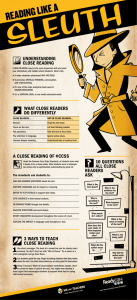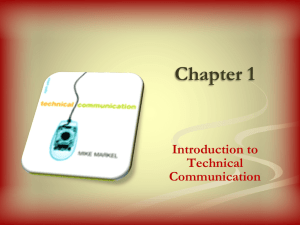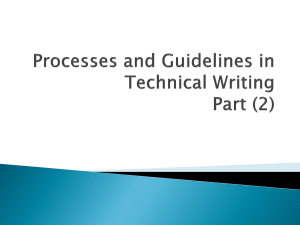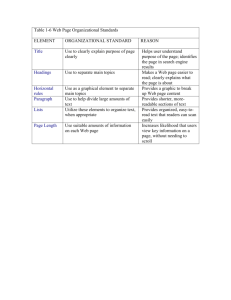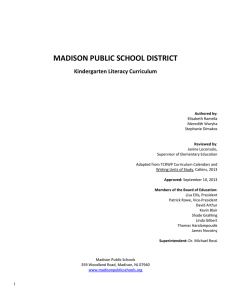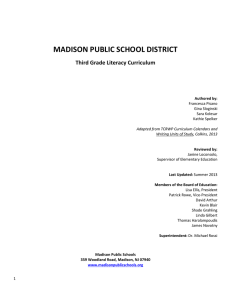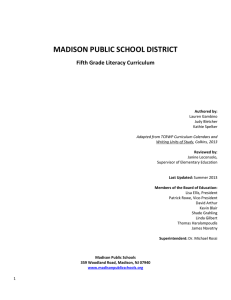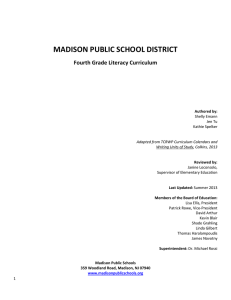Writing for the Web
advertisement
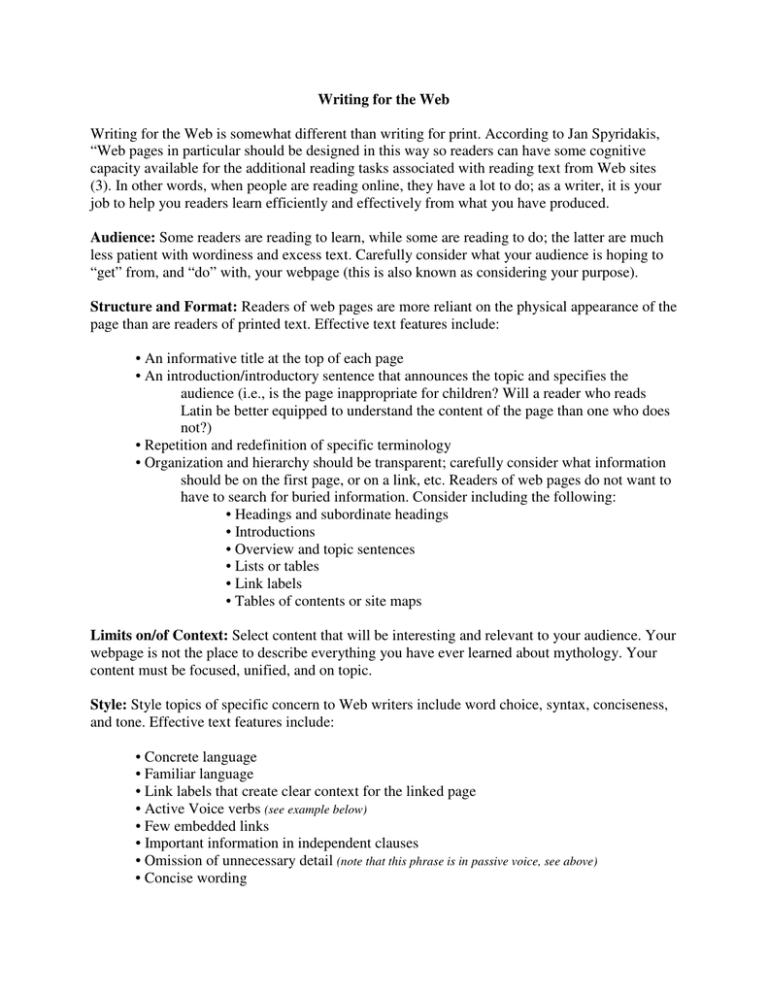
Writing for the Web Writing for the Web is somewhat different than writing for print. According to Jan Spyridakis, “Web pages in particular should be designed in this way so readers can have some cognitive capacity available for the additional reading tasks associated with reading text from Web sites (3). In other words, when people are reading online, they have a lot to do; as a writer, it is your job to help you readers learn efficiently and effectively from what you have produced. Audience: Some readers are reading to learn, while some are reading to do; the latter are much less patient with wordiness and excess text. Carefully consider what your audience is hoping to “get” from, and “do” with, your webpage (this is also known as considering your purpose). Structure and Format: Readers of web pages are more reliant on the physical appearance of the page than are readers of printed text. Effective text features include: • An informative title at the top of each page • An introduction/introductory sentence that announces the topic and specifies the audience (i.e., is the page inappropriate for children? Will a reader who reads Latin be better equipped to understand the content of the page than one who does not?) • Repetition and redefinition of specific terminology • Organization and hierarchy should be transparent; carefully consider what information should be on the first page, or on a link, etc. Readers of web pages do not want to have to search for buried information. Consider including the following: • Headings and subordinate headings • Introductions • Overview and topic sentences • Lists or tables • Link labels • Tables of contents or site maps Limits on/of Context: Select content that will be interesting and relevant to your audience. Your webpage is not the place to describe everything you have ever learned about mythology. Your content must be focused, unified, and on topic. Style: Style topics of specific concern to Web writers include word choice, syntax, conciseness, and tone. Effective text features include: • Concrete language • Familiar language • Link labels that create clear context for the linked page • Active Voice verbs (see example below) • Few embedded links • Important information in independent clauses • Omission of unnecessary detail (note that this phrase is in passive voice, see above) • Concise wording • Short sentences • Plain instead of inflated language Proofreading: I cannot emphasize the importance of this enough. Your page will be “out there” for the world to see, and you do not want to embarrass yourself (or Cornell College) with typos or incorrect information. Finally, here are some great websites to check out for further information: http://www.useit.com/papers/webwriting/: Research on how readers read and how writers should writer for the Web http://www.dartmouth.edu/~webteach/articles/text.html: One of the Writing Studio’s favorite sites http://www.alistapart.com/articles/writeliving : Readable, good general information about writing for the Web




